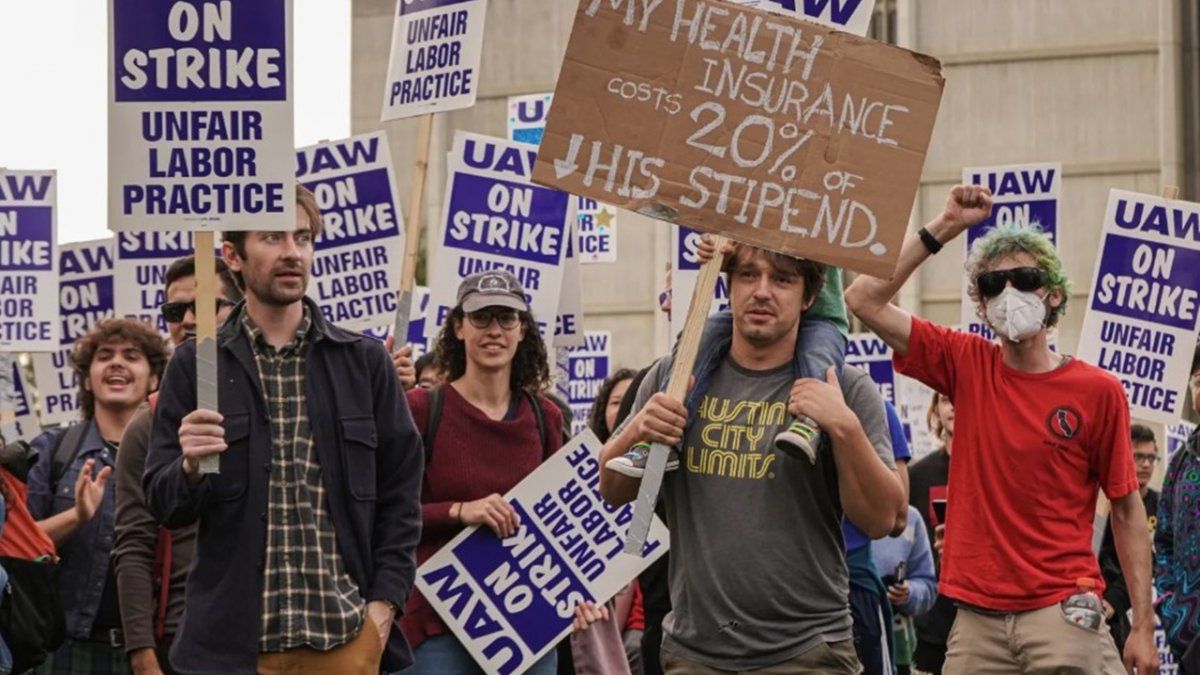The Union United Auto Workers start simultaneous strikes in three factories owned by General Motors, Ford and Stellantisowner of Chrysler, starting the industrial labor action most ambitious of USA in decades in the automotive sector, one of the most important in its economy and by weight worldwide.
The strikes at the three factories detroit They will stop production of the Ford Bronco, the Jeep Wrangler and the Chevrolet Colorado pickup truck, in addition to other popular models.
“For the first time in our history we will go on strike in the Big Three”declared the president of the UAW, Shawn Fain, adding that the union will avoid more costly company-wide strikes for now, but that all options are open if new contracts are not agreed. Fain laid out plans for the walkouts on Facebook Live, less than two hours before the old contract expired.
The strikes end weeks of confrontations between Fain and the directors of the Detroit Three regarding the union demands of a greater stake in the profits generated by combustion trucks and a greater job security as automakers shift toward electric vehicles.
The confrontation has become a political issue, and President Joe Biden, who faces an election next year, called for a deal.
strikeuatomotrices.png
Historic strike: more than 12,000 employees on strike
The strikeswhich affect a total of 12,700 workers, take place in the assembly plants of Ford in Wayne, Michigan, GM in Wentzville, Missouri, and Stellantis’ Jeep brand in Toledo, Ohio.. These plants are essential for the production of some of the vehicles most profitable car manufacturers.
Fain’s decision to opt for selective stoppages could limit the cost of the strike to the union. The UAW has a strike fund of $825 million, tiny compared to the billions in liquidity automakers have accumulated thanks to the solids benefits of the trucks and SUVs manufactured by UAW members.
But a one-week closure at your plant of Jeep in Toledo could reduce income by more than 380 million dollars, according to data from Stellantis’ financial reports.
“This is more of a symbolic strike than a truly disruptive one,” said Sam Fiorani, a production analyst at Auto Forecast Solutions, who added that he had expected more in the first wave of the strike. “If the negotiations do not go in a direction that Fain considers positive, we can expect a major strike in one or two weeks” he said. Fiorani estimated that the strike would stop production of some 24,000 vehicles a week. And although it is targeting some key brands, buyers would be willing to wait, for now.
Historic strike: the position of the companies and the union’s request
The union wants a 40% increase. The companies They have offered up to twenty%, but without the social benefits demanded by the union. None of the three Detroit companies has proposed eliminating the graduated salary systemswhich require newly hired workers to stay on the job for eight years to earn the same as veterans, a key demand of the UAW.
Ford said the UAW’s latest proposals would double its labor costs in the United States and they would lose competitiveness against Tesla and other non-union rivals. A strike could mean the UAW’s profit-sharing checks for this year would be “decimated,” he said.
Stellantis stated that it had immediately contacted “contingency mode” and that it would make all appropriate structural decisions to protect the company and its operations in North America, without giving further details.
Fain said earlier this week that Stellantis had proposed closing until 18 facilities in the United States.
G.M. It showed itself disappointed for unemployment and said he would continue “negotiating in good faith.”
Fain has rejected automakers’ claims that the union demands would cost too much, saying that companies have spent billions on share buybacks and executive salaries.
Suppliers and other industries that rely on automakers and their workers could see demand and liquidity dry up if the UAW closes the Detroit Three factories in the United States.
Historic strike: the Government’s position
Biden is investing billions in federal grants to increase sales of electric vehicles. But the shift to electric vehicles could endanger Job positions of the UAW in the combustion engine sector.
Although a deal with one or more of the automakers could come at any time, the interruption It is an opportunity for car manufacturers non-union in the United States, including Tesla, Toyota, Honda and Mercedes.
These non-union factories, plus imported vehicles, represent more than half of the vehicles sold in the US market.
According to Deutsche Bank estimates, a total strike would affect the profits of each automaker by about 400 to 500 million dollars per week of production loss. Some of those losses could be recovered by later increasing production schedules, but that possibility fades as the strike drags on for weeks or months.
Source: Ambito




